De "Back To School"-tijd is in volle gang, wat betekent dat we onze normale routines weer oppakken. Binnen onze normale routines hebben we vaak minder tijd om maaltijden vanaf nul te bereiden, ons drukke leven staat uitgebreid koken met aparte ingrediënten in de weg.
Daarom waren we benieuwd naar het Europese consumptiegedrag met betrekking tot kant-en-klare maaltijden uit de supermarkt. Denk aan kant-en-klare maaltijden die gemakkelijk in de magnetron of oven te bereiden zijn. Lees meer over consumptieroutines en andere voorkeuren in ons Ready Meals Consumer Report.
DE MEESTE EUROPEANEN CONSUMEREN KANT-EN-KLAARMAALTIJDEN
81% van de Europeanen eet kant-en-klare maaltijden. Gemiddeld 35% kiest ervoor om dergelijke maaltijden "soms" te eten. Gevolgd door "zelden", met 33%. Het blijkt dat Nederlandse inwoners het minst geïnteresseerd zijn in het eten van kant-en-klaarmaaltijden, aangezien 26% van de consumenten zegt helemaal geen kant-en-klaarmaaltijden te eten.
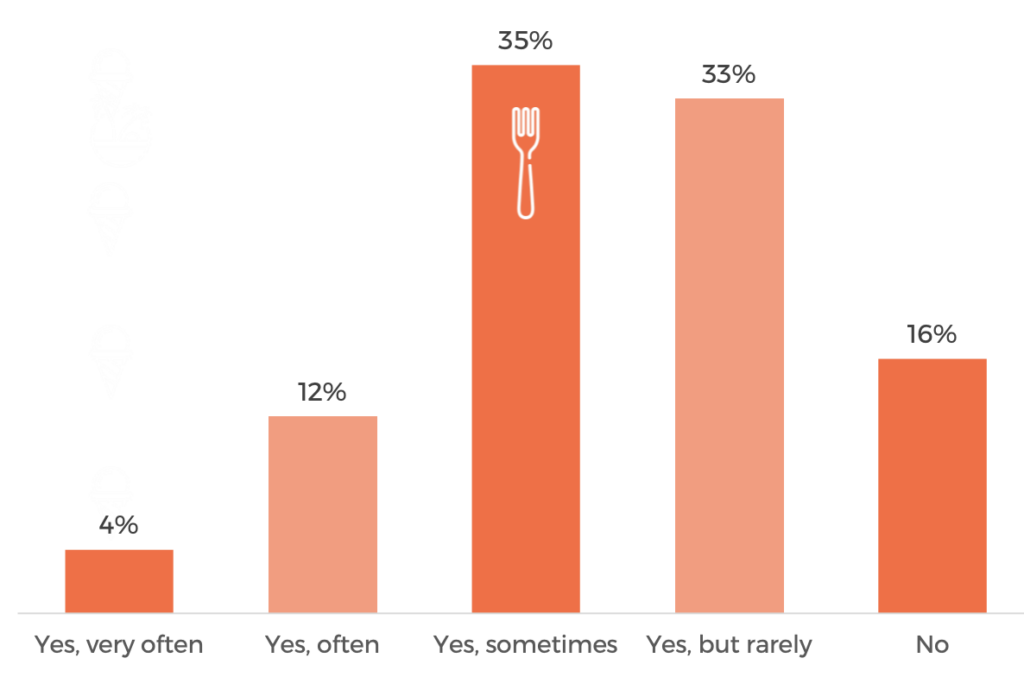
Degenen die geen kant-en-klaar maaltijden eten...
... vinden het ongezond - 61%
... Kook liever zelf - 59%
... Denkt dat het te duur is - 34%
... Koken voor het hele gezin - 21%
... Heb genoeg tijd om te koken - 18%
GEREEDE MAALTIJDEN: EEN GELEGENHEIDSEVENEMENT
Voor de mensen die wel kant-en-klaarmaaltijden eten, is dit meestal een minder dan maandelijkse gelegenheid (24%). Kant-en-klaarmaaltijden worden het minst vaak geconsumeerd in Nederland.
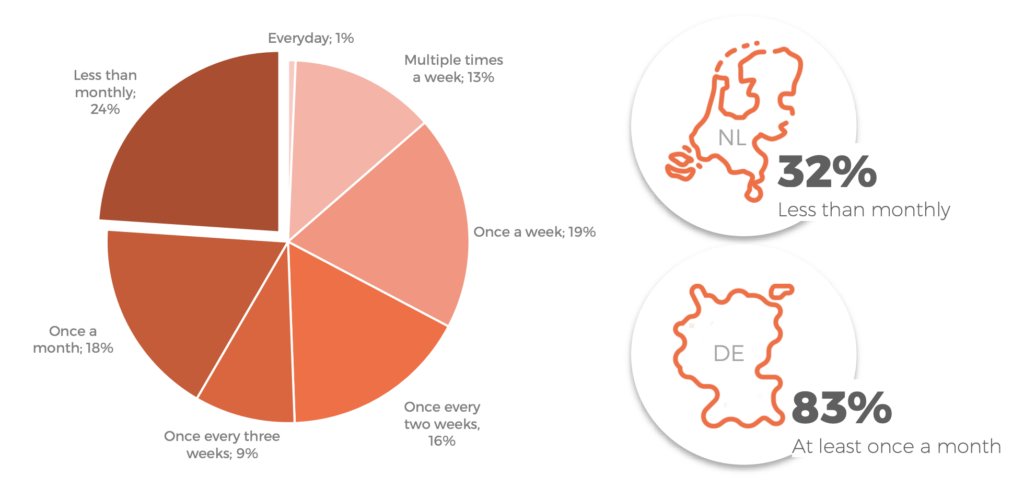
GEMAK, DE GROOTSTE MOTIVATOR
De grootste reden voor Europeanen om kant-en-klare maaltijden te consumeren is dat ze te weinig tijd hebben om zelf te koken (58%). Gevolgd door het gemak (50%) en het gemak van het gemakkelijk bewaren en invriezen (27%).
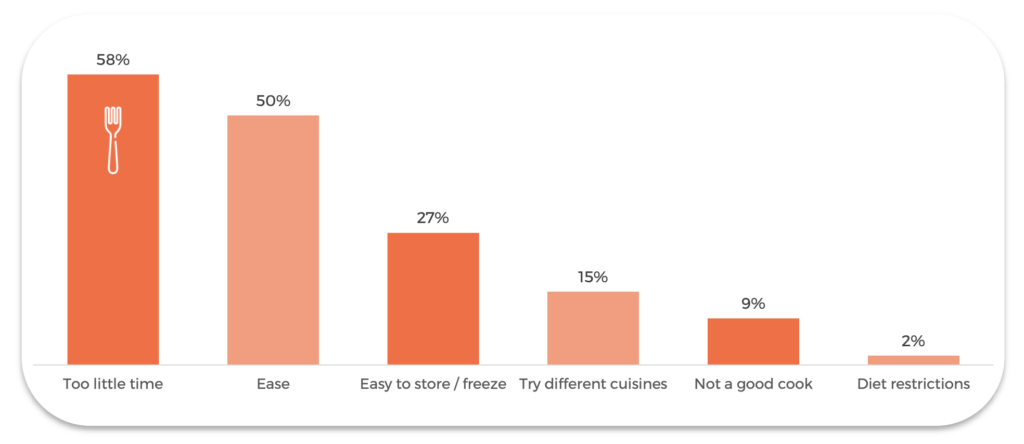
EEN "VERSE" ITALIAANSE KANT-EN-KLAARMAALTIJD HEEFT DE VOORKEUR
De meeste Europeanen (77%) consumeren graag kant-en-klaarmaaltijden die "vers" zijn en in de koeling van de supermarkt worden bewaard. 58% van de Europeanen houdt (ook) van diepvriesmaaltijden. Qua keuken steelt de Italiaanse keuken het hart van de Europese consument het meest (66%).
Leuke feiten
- In tegenstelling tot alle andere deelnemende landen consumeren de Duitsers meer diepgevroren dan verse kant-en-klaarmaaltijden.
- De Fransen vinden hun keuken het lekkerst (61%).
- In het Verenigd Koninkrijk is de Aziatische keuken het populairst (62%).
GEMAK DAT HET WAARD IS OM VOOR TE BETALEN
41% van de Europese consumenten is bereid tussen de 2 en 4 euro voor een kant-en-klaarmaaltijd te betalen. Op de vraag of consumenten het erg vinden om meer voor een kant-en-klaarmaaltijd te betalen dan dezelfde ingrediënten afzonderlijk zouden kosten, antwoordde 54% dat ze het erg vinden, maar ze begrijpen niet waarom.
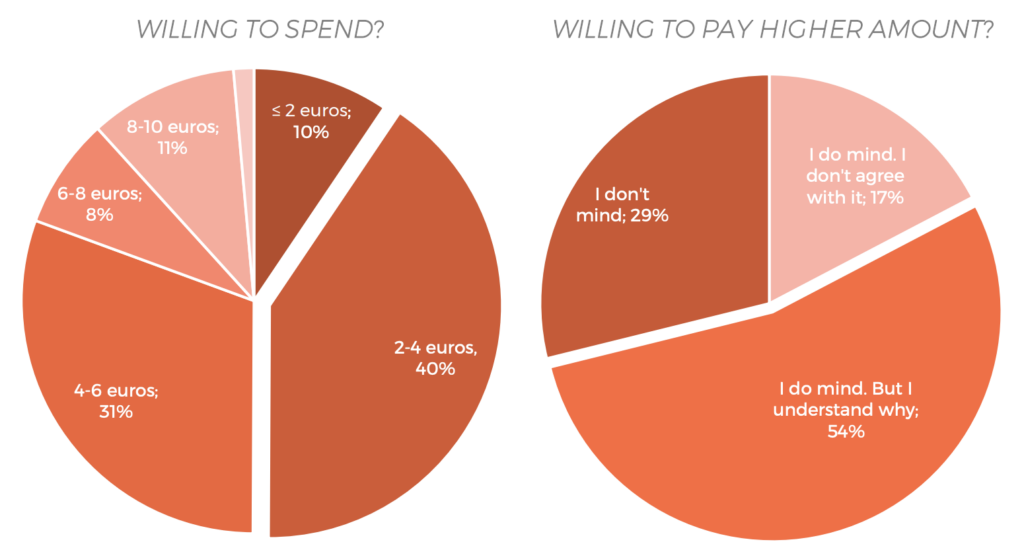
Leuk weetje
Belgische en Nederlandse inwoners zijn bereid iets meer te betalen voor een kant-en-klaarmaaltijd dan de andere deelnemende landen (namelijk 4 tot 6 euro)
GEREEDE MAALTIJDEN: EEN ETENTJE VOOR ÉÉN
Het is niet verrassend dat een kant-en-klaarmaaltijd vaak alleen wordt gegeten (51%). Maar uit de cijfers blijkt dat het ook met een partner wordt gegeten (29%) en soms zelfs met familie (23%).
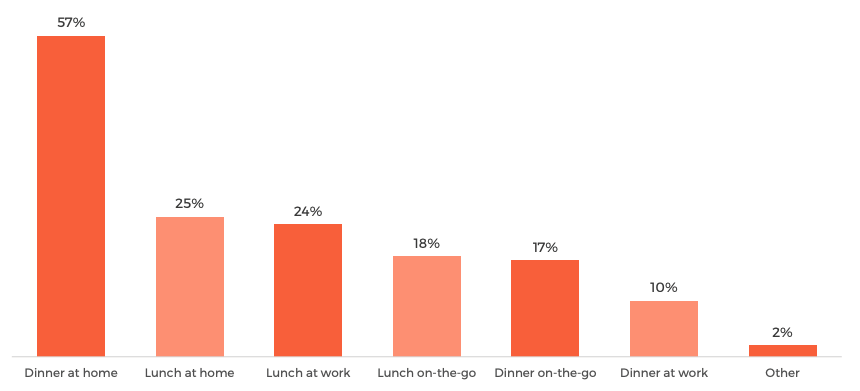
Leuke feiten
- Spanje lijkt het enige deelnemende land te zijn waar kant-en-klare maaltijden vaker worden geconsumeerd tijdens de lunch (45%) dan tijdens het avondeten (33%).
- In Nederland worden kant-en-klare maaltijden het minst geconsumeerd tijdens de lunch (5%).
WAAR VOOR JE GELD BELANGRIJK VOOR EUROPEANEN
Bij het kiezen van kant-en-klare maaltijden zeggen de meeste Europeanen dat ze "soms" de ingrediëntenlijst op het etiket lezen (48%). 31% zegt "altijd" de ingrediëntenlijst te lezen. Prijs (64%) en portiegrootte (50%) zijn de twee belangrijkste factoren waarmee consumenten rekening houden bij het kopen van kant-en-klare maaltijden.
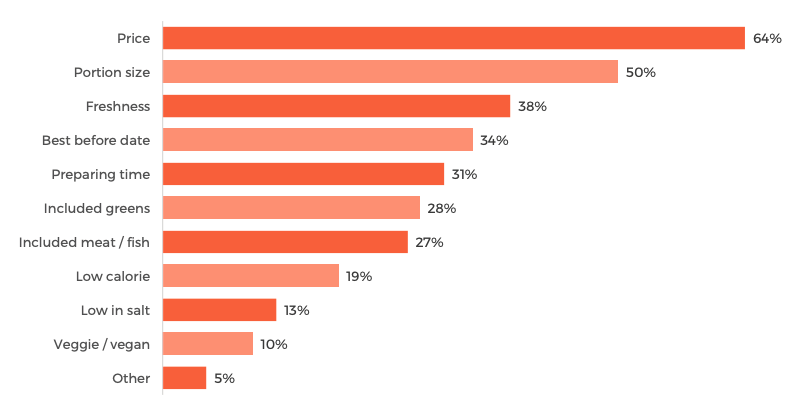
Leuke feiten
- Spanje is het enige land waar de meeste mensen "altijd" de vermelde ingrediënten lezen (48%).
- Duitsland heeft het hoogste percentage mensen dat "nooit" het etiket met vermelde ingrediënten leest (32%).
HOE ZIT HET MET LOYALITEIT?
De meeste Europeanen zijn niet erg trouw als het op kant-en-klare maaltijden aankomt (66%). Dit kan te maken hebben met het feit dat de meeste consumenten vinden dat de kwaliteit niet meer dan "oké" is (53%). 37% vindt de kwaliteit van kant-en-klaarmaaltijden echter wel "goed".
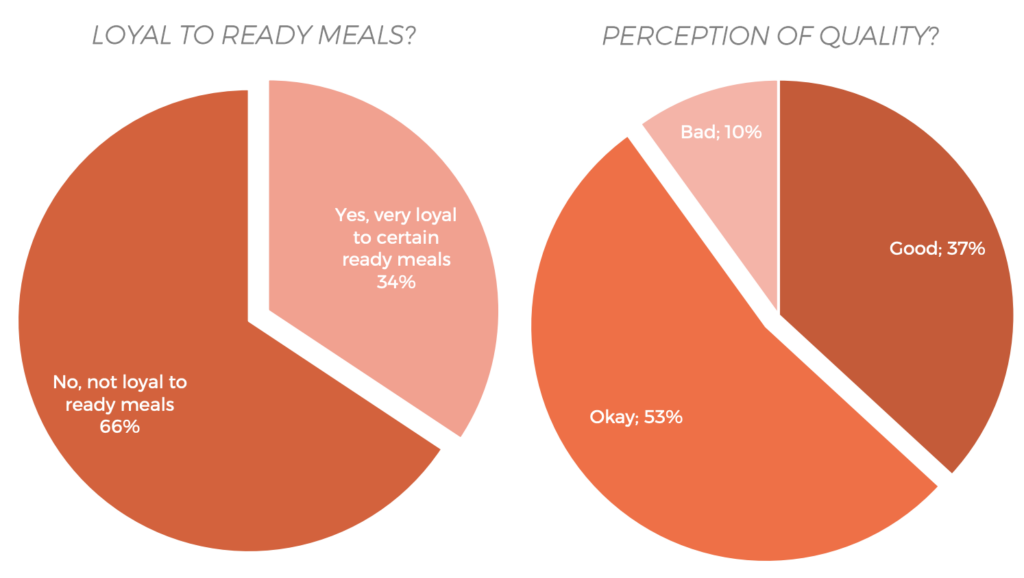
Leuk weetje
Inwoners van het Verenigd Koninkrijk zijn het minst loyaal aan kant-en-klaarmaaltijden. 83% zegt helemaal niet loyaal te zijn.
De bevindingen in dit rapport zijn gebaseerd op de resultaten van een onderzoeksopdracht die in augustus 2019 is voorgelegd aan de Roamler Crowd. Het doel was om de aankooppraktijken van de crowd te bepalen als het gaat om kant-en-klare maaltijden. De bevindingen houden rekening met gegevens die werden verzameld bij 6.211 respondenten, gevestigd in Spanje, het Verenigd Koninkrijk, België, Frankrijk, Nederland en Duitsland.